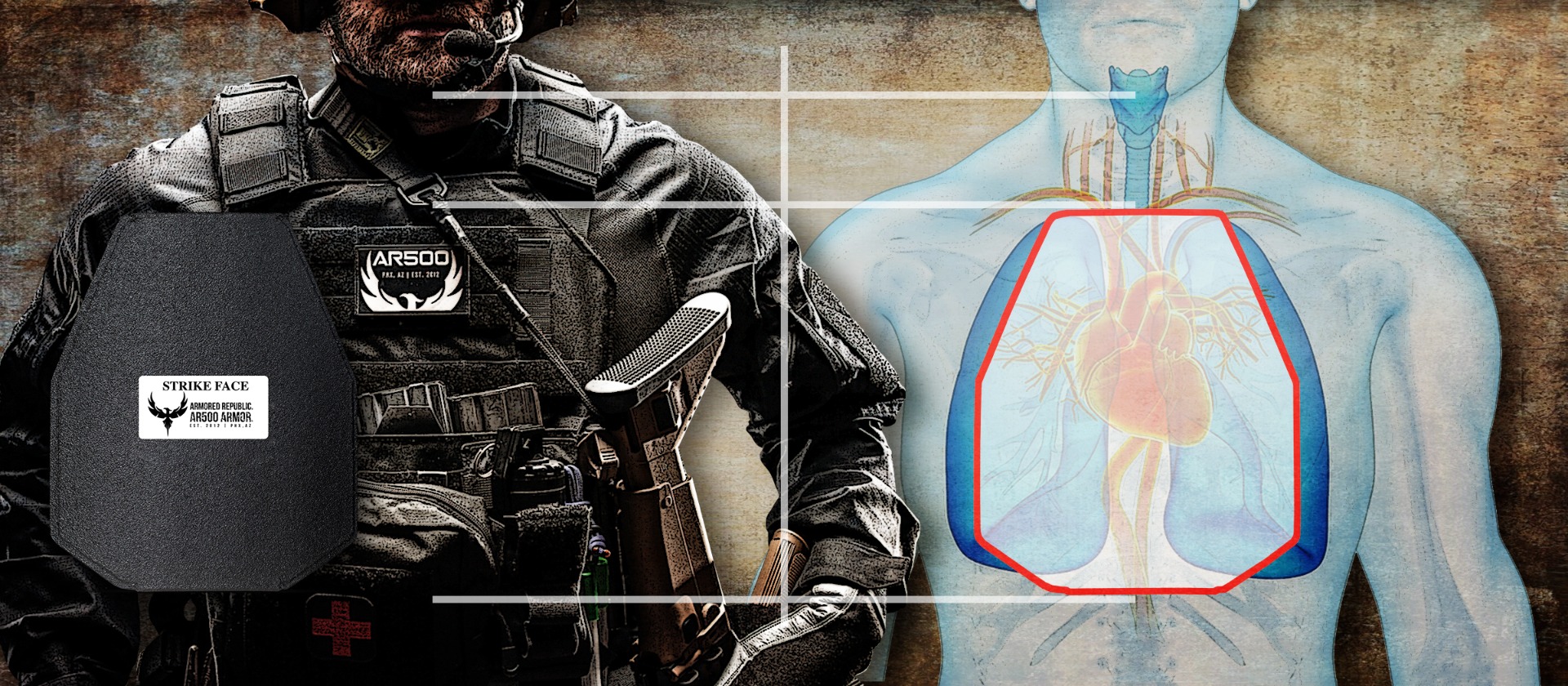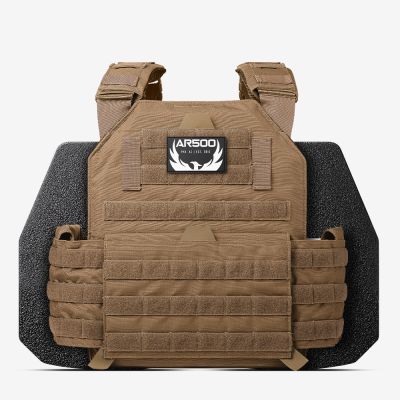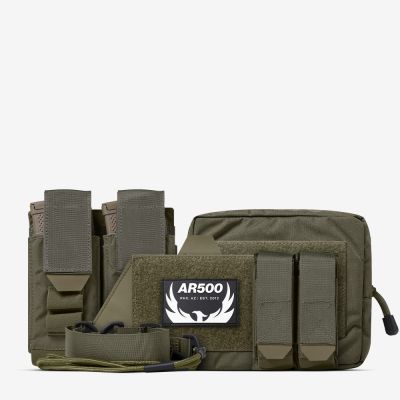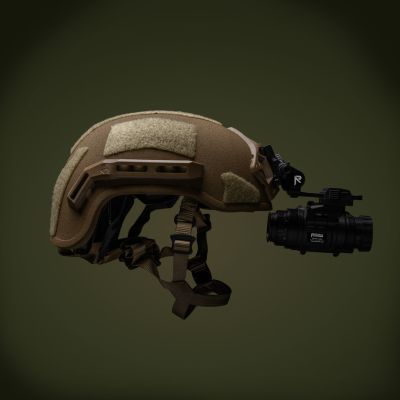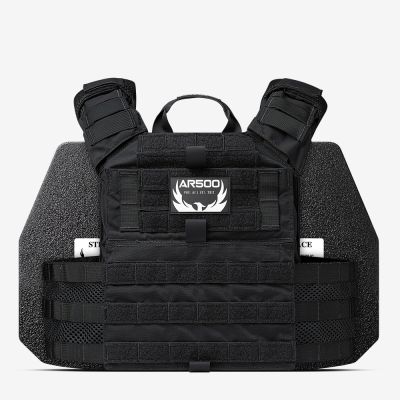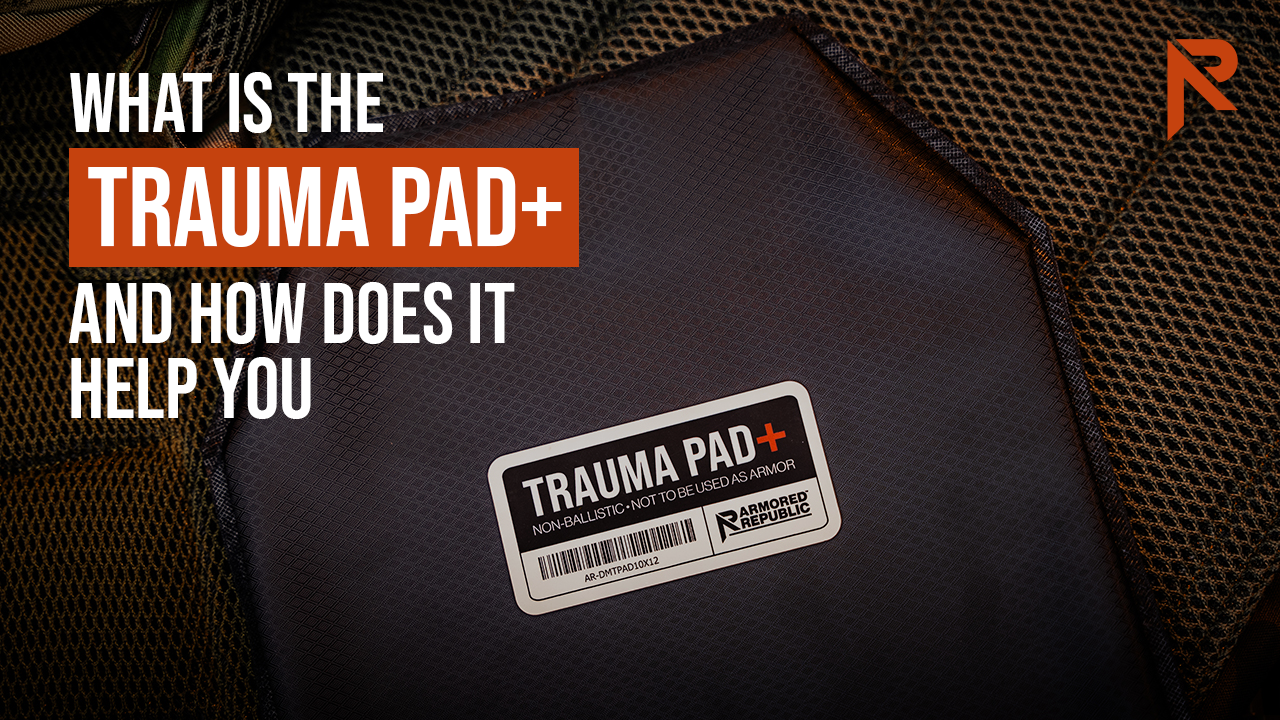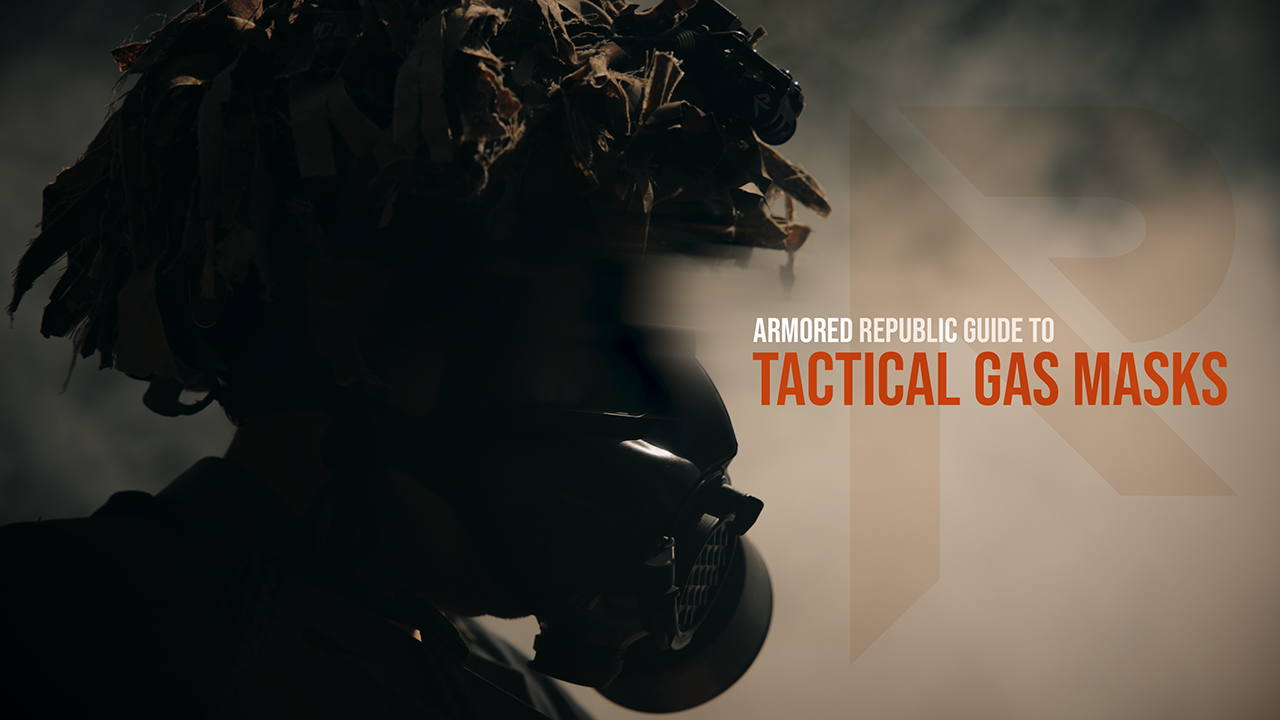Body Armor History: From Ancient Times to Modern Warfare
- By AR500 Armor
- Apr 16, 2024
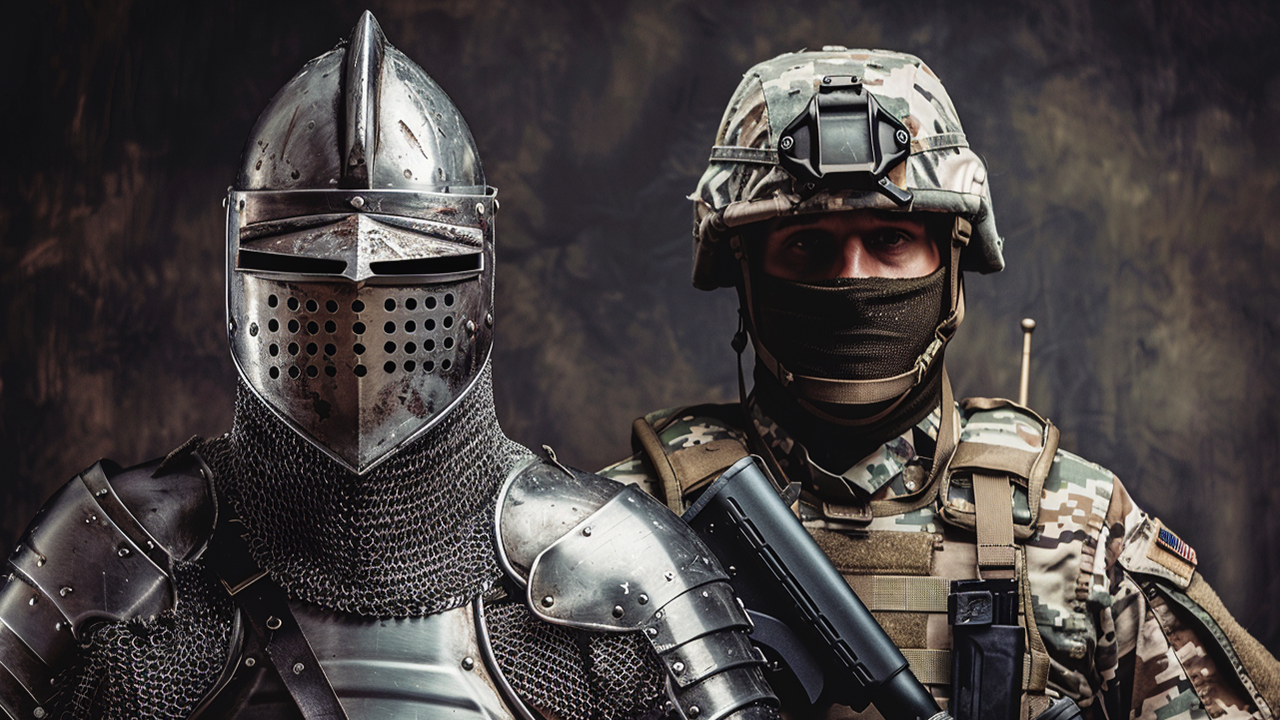
Throughout history, the quest for survival in the theater of combat has driven the evolution of body armor, a critical component of warfare that has continually adapted to the challenges of its time. From the leather and bronze armaments of ancient warriors to the advanced ballistic protection solutions of today, body armor has stood as a testament to human ingenuity in the face of adversity. This article traces the remarkable journey of armor through the ages, exploring how ancient techniques have laid the groundwork for today's sophisticated armor systems.
As we delve into the past, we uncover the pivotal moments that have defined the course of armor development, highlighting the materials, technologies, and strategies that have shaped its history. From the chainmail of medieval knights to the Kevlar vests protecting soldiers in modern conflicts, the evolution of body armor reflects a constant interplay between offense and defense, where each advancement in weaponry has been met with an ingenious countermeasure in protection. Join us as we explore the fascinating history of body armor, understanding how centuries of innovation have culminated in the advanced ballistic protection solutions safeguarding the lives of those on the front lines of modern warfare.
From Antiquity to the Middle Ages: The Development of Armor
As we explore the rich history surrounding body armor, we journey from the primitive defenses crafted by ancient civilizations to the more sophisticated protective gear of the Middle Ages. Each epoch in armor development not only reflects the technological advancements and strategic necessities of its time but also the artistry and cultural values that influenced its design. From the ancient Sumerians and Greeks to the medieval knights, the evolution of armor has been a pivotal factor in the outcomes of battles and the progression of warfare tactics. As we delve into the intricacies of ancient and medieval armor, we uncover the enduring legacy of these innovations in modern warfare protection.
From Leather to Bronze: The Dawn of Armor in Ancient Civilizations
The genesis of body armor can be traced back to ancient civilizations, where the imperative for survival in battle led to the development of the earliest forms of protective gear. The Sumerians, one of the earliest urban societies, laid the groundwork for future armor by crafting protective garments from leather, a readily available material that offered basic defense against rudimentary weapons. As metallurgy advanced, bronze emerged as a pivotal material in the armoring techniques of ancient warriors. The Egyptians and Greeks refined the use of bronze, fashioning breastplates that not only offered superior protection but also signified rank and prowess on the battlefield.
Evolution of Armor in the Greek Phalanx: Mobility Meets Defense
The transition from bronze to more sophisticated materials and designs marks the evolution of armor through the ages. The Greeks, known for their phalanx formation, utilized bronze greaves and helmets to protect their soldiers, emphasizing mobility and collective defense. This period saw the integration of functionality and artistry, with armor serving both as protection and a symbol of the warrior's identity.

The Middle Ages: The Age of Chainmail and Plate Armor
As time marched on, the Middle Ages heralded a new era in the development of body armor. The proliferation of chainmail armor, characterized by its interlocking metal rings, offered a revolutionary approach to protection. This flexible armor provided significant defense against slashing weapons and was a staple among European knights. The adaptability of chainmail, capable of covering different parts of the body, showcased the evolving understanding of battlefield needs and the importance of mobility and flexibility in combat situations.
Perfecting Protection: The Art and Functionality of Plate Armor
The culmination of medieval armor technology was the introduction of plate armor. European knights donned full suits of plate armor, meticulously crafted to protect against the increasingly deadly weapons of the time. This era's armor was a marvel of engineering, offering comprehensive protection while allowing for remarkable mobility. The development of plate armor represented the pinnacle of medieval armoring techniques, embodying the relentless pursuit of balance between protection, functionality, and artistry.
Bridging Ages: The Legacy of Ancient and Medieval Innovations in Modern Warfare Protection
The evolution from ancient leather and bronze to the sophisticated chainmail and plate armor of the Middle Ages reflects a continual quest for improved protection. This journey through ancient and medieval armor not only highlights the innovations in material and design but also underscores the adaptive nature of human ingenuity in the face of evolving warfare technologies. As we delve deeper into the history of body armor, the legacy of these early advancements lays the foundation for the sophisticated ballistic protection solutions of modern warfare.
From the Renaissance to the 19th Century: The Transformation of Armor in the Face of Gunpowder
The Renaissance: A New Chapter in Armor Design
The Renaissance period marked a significant transformation in the art and science of armor making. This era, characterized by a revival of classical learning and wisdom, witnessed the creation of more elaborate and ornate plate armor, reflecting the period's artistic advancements and the heightened status of its wearers. Armor became not just a means of protection but also a canvas for exquisite craftsmanship and decoration. Blacksmiths and armorers incorporated intricate etchings, embossing, and even gilding, making armor a symbol of power, prestige, and artistry. Such advancements were not merely aesthetic; improvements in design also enhanced the armor's functionality, offering better mobility and protection. The introduction of articulated joints and the use of lighter, stronger steel allowed for greater flexibility and endurance in battle.
The Impact of Firearms on Armor
The late Renaissance also saw the burgeoning use of gunpowder weapons, a technological leap that began to redefine warfare. The advent of firearms introduced a new challenge for armorers. Traditional plate armor, while effective against melee weapons and earlier projectile weapons, was increasingly vulnerable to bullets. This vulnerability heralded a pivotal shift in armor design and use. Throughout the 16th and 17th centuries, armorers experimented with various materials and thicknesses to offer protection against firearms, leading to the development of specialized breastplates, known as cuirasses, that could withstand a musket shot at a distance.
Transitioning to the 18th and 19th Centuries: The Decline of Traditional Armor
As firearms technology continued to evolve, the effectiveness of heavy plate armor diminished. By the 18th century, the widespread use of more powerful and accurate firearms made full suits of armor impractical for most soldiers. Armies began to shift towards lighter protective gear, focusing on mobility and firepower over heavy protection. The 19th century solidified this transition, with traditional armor being largely abandoned in favor of uniforms that offered minimal physical protection but maximized soldiers' mobility and comfort. This period also saw the introduction of new forms of personal protection, such as the steel helmet, which offered some defense against shrapnel and was a precursor to modern ballistic helmets.
The Legacy of Armor from the Renaissance to the 19th Century
The transition from the ornate plate armor of the Renaissance to the minimalistic military gear of the 19th century reflects a broader evolution in warfare and military strategy. This era of transition underscores the constant interplay between offensive capabilities and defensive technologies. As we explore the history of body armor, the innovations and adaptations of this period lay the groundwork for the development of modern ballistic protection, illustrating the enduring quest for balance between protection, mobility, and effectiveness in the face of evolving threats.
20th Century: The Dawn of Modern Ballistic Protection
The Great Wars: Steel Helmets and Early Body Armor
The 20th century marked a pivotal point in the history of body armor, beginning with the massive conflicts of World War I and World War II. These wars introduced unprecedented challenges in personal protection, necessitating the development and widespread distribution of steel helmets to protect soldiers from shrapnel. The advent of trench warfare during World War I emphasized the need for effective headgear, leading to the iconic steel helmets used by various armies. Additionally, the period saw the experimental use of steel breastplates and vests designed to offer some level of protection against the era's ballistic threats. While these early forms of body armor were relatively heavy and offered limited protection, they represented significant strides towards modern ballistic armor, emphasizing the need for a balance between protection and mobility on the battlefield.
Revolution in Ballistic Protection: The Advent of Kevlar
The late 20th century witnessed a revolutionary development in body armor with the introduction of Kevlar and other synthetic fibers. Invented in the 1960s, Kevlar's unique properties—its high strength-to-weight ratio and ability to absorb and disperse energy—made it an ideal material for ballistic protection. By the 1980s, Kevlar vests had become a standard issue for many police forces and military units, providing unprecedented levels of protection against bullets and explosives. The development of Kevlar body armor marked a significant advancement in personal protection, enabling soldiers and law enforcement officers to operate with greater confidence in their safety.
This era also saw the innovation of layering and combining materials to enhance protective capabilities further. Modern ballistic vests are often made from multiple layers of Kevlar, sometimes combined with ceramic or polyethylene plates that can stop higher-caliber bullets. The science of body armor had transformed from the cumbersome metal plates of the past to the highly sophisticated, layered systems that offer both flexibility and superior protection.
Impact and Legacy
The evolution of body armor in the 20th century—from steel helmets and vests to the development of Kevlar and other synthetic fibers—represents a monumental shift in the approach to personal protection in warfare and law enforcement. This period laid the groundwork for the sophisticated ballistic protection technologies used today, highlighting the relentless pursuit of innovation in safeguarding human lives. As we reflect on the history of body armor, the advancements made during the 20th century underscore the critical role of materials science and engineering in developing solutions that meet the challenges of modern combat and public safety.
21st Century and Beyond: The Frontier of Body Armor Technology
Harnessing the Latest in Modern Warfare Armor
In the 21st century, the field of body armor has seen rapid advancements, responding to the ever-evolving demands of modern warfare with innovations that offer enhanced protection, greater mobility, and improved comfort. At the forefront of these developments are modular systems, ceramic plates, and the use of Ultra-High-Molecular-Weight Polyethylene (UHMWPE), each representing significant leaps forward in protective gear.
- Modular body armor: These systems have revolutionized the way protection is approached, allowing for customization based on mission requirements and threat levels. These systems are designed to be highly adaptable, with components that can be added or removed as needed, ensuring that soldiers carry only the necessary weight and bulk for a given situation.
- Ceramic plates: Known for their ability to dissipate the kinetic energy of bullets and shrapnel effectively, have become a standard in protective gear due to their lighter weight compared to traditional steel. When used in conjunction with Kevlar and other backing materials, ceramic plates provide superior protection against high-velocity projectiles.
- UHMWPE: a material with a remarkable strength-to-weight ratio, has also become integral to modern armor solutions. Its use in body armor vests and helmets offers a significant reduction in weight while maintaining, and in some cases, enhancing ballistic protection. The incorporation of UHMWPE has been a game-changer, particularly in designs focused on reducing the physical burden on the wearer.
Envisioning the Future of Armor
As we look towards the future, the potential for further innovation in body armor is boundless. Advances in nanotechnology hold promise for creating materials that are not only lighter and stronger than current options but also capable of providing adaptive protection. Imagine armor that could harden upon impact or materials that can self-repair, offering unprecedented levels of durability and resilience.
Smart fabrics and wearables are another exciting frontier, with the potential to integrate sensors that monitor health and environmental conditions, offering enhanced situational awareness to the wearer. These technologies could revolutionize the way soldiers and law enforcement personnel are equipped, providing not just protection but valuable data for operational efficiency.
Perhaps one of the most anticipated developments in body armor is the advent of powered exoskeletons. These wearable suits could augment human strength and endurance, allowing for the carriage of heavier protective gear without compromising mobility. Beyond protection, exoskeletons could transform the physical capabilities of the wearer, with applications ranging from military to rescue operations.
The Continuum of Innovation
The 21st century marks an era of significant advancement in body armor technology, driven by a blend of material science, engineering, and the imperative to protect human life more effectively. As we venture into the future, the prospects for armor innovation—from nanotechnology and smart fabrics to exoskeletons—promise not only to enhance protection but to redefine the human potential in the face of conflict and danger. The evolution of body armor, from the battlefields of the past to the high-tech frontiers of tomorrow, continues to exemplify the relentless human spirit to innovate and persevere.
The Unending March of Armor Evolution
As we trace the arc of armor technology from its nascent forms in ancient civilizations to the cutting-edge innovations of the 21st century, it's clear that the evolution of body armor is a testament to human resilience and ingenuity. This journey, marked by significant transformations and driven by the relentless pursuit of protection, highlights how advancements in materials science and engineering have continually revolutionized personal defense mechanisms. The narrative of armor, from leather and bronze to Kevlar and UHMWPE, reflects a saga of constant innovation, shaped by the challenges and necessities of each era.
Looking forward, the future of body armor promises to be as dynamic as its past. With the ongoing advancements in nanotechnology, smart fabrics, and exoskeletons, the next chapters in the evolution of body armor will undoubtedly continue to push the boundaries of what's possible, offering enhanced protection, functionality, and mobility. As we stand on the cusp of these future armor technologies, one thing remains certain: the quest for better, lighter, and more effective armor will persist, driven by the unyielding human spirit to safeguard lives against the ever-evolving threats of warfare and violence.
Body Armor Innovations for a Safer Tomorrow: Armored Republic's Mission
Tracing the evolution of body armor reveals a continuous quest for innovation—a principle that Armored Republic embodies as we lead today's body armor industry with cutting-edge steel, ceramic, and comprehensive defense solutions. Founded with a mission to honor Christ and equip Free Men with tools of liberty to preserve God-given rights, Armored Republic has been setting standards in ballistic protection since 2012.
The Armored Republic Pledge
At Armored Republic, we blend tradition with innovation, offering top-quality, reliable products designed for the responsible, law-abiding American citizen—whether they are serving in law enforcement, the military, or simply exercising their right to personal protection. Our unique manufacturing processes and stringent material specifications have allowed us to pioneer advancements in ballistic steel core body armor, augmented by leading fragmentation mitigation technologies.
Our product line, from body armor to tactical gear and apparel, is available nationwide, embodying our commitment to safety, quality, and American manufacturing excellence. Located in Phoenix, Arizona, our team is dedicated to upholding the God given freedoms and rights of our customers through superior defense solutions.
*Images and sources for this article:
Armored Republic
Honor Christ by equipping Free Men with the tools of liberty necessary to preserve God-given rights.





